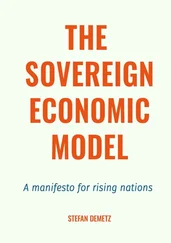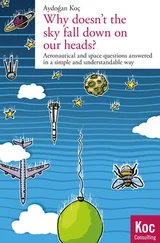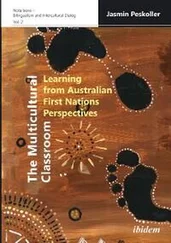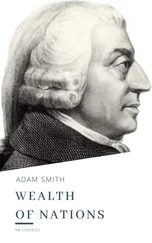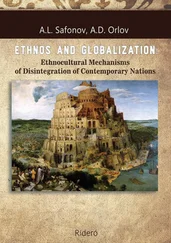Now that Deng and the reformers had consummated their political revolution and were in control of the state, they launched a series of further changes in economic institutions. They began in agriculture: By 1983, following the ideas of Hu Qiaomu, the household responsibility system, which would provide economic incentives to farmers, was universally adopted. In 1985 the mandatory state purchasing of grain was abandoned and replaced by a system of more voluntary contracts. Administrative control of agricultural prices was greatly relaxed in 1985. In the urban economy, state enterprises were given more autonomy, and fourteen “open cities” were identified and given the ability to attract foreign investment.
It was the rural economy that took off first. The introduction of incentives led to a dramatic increase in agricultural productivity. By 1984 grain output was one-third higher than in 1978, though fewer people were involved in agriculture. Many had moved into employment in new rural industries, the so-called Township Village Enterprises. These had been allowed to grow outside the system of state industrial planning after 1979, when it was accepted that new firms could enter and compete with state-owned firms. Gradually economic incentives were also introduced into the industrial sector, in particular into the operation of state-run enterprises, though at this stage there was no hint at privatization, which had to wait until the mid-1990s.
The rebirth of China came with a significant move away from one of the most extractive set of economic institutions and toward more inclusive ones. Market incentives in agriculture and industry, then followed by foreign investment and technology, would set China on a path to rapid economic growth. As we will discuss further in the next chapter, this was growth under extractive political institutions, even if they were not as repressive as they had been under the Cultural Revolution and even if economic institutions were becoming partially inclusive. All of this should not understate the degree to which the changes in economic institutions in China were radical. China broke the mold, even if it did not transform its political institutions. As in Botswana and the U.S. South, the crucial changes came during a critical juncture—in the case of China, following Mao’s death. They were also contingent, in fact highly contingent, as there was nothing inevitable about the Gang of Four losing the power struggle; and if they had not, China would not have experienced the sustained economic growth it has seen in the last thirty years. But the devastation and human suffering that the Great Leap Forward and the Cultural Revolution caused generated sufficient demand for change that Deng Xiaoping and his allies were able to win the political fight.
BOTSWANA, CHINA, and the U.S. South, just like the Glorious Revolution in England, the French Revolution, and the Meiji Restoration in Japan, are vivid illustrations that history is not destiny. Despite the vicious circle, extractive institutions can be replaced by inclusive ones. But it is neither automatic nor easy. A confluence of factors, in particular a critical juncture coupled with a broad coalition of those pushing for reform or other propitious existing institutions, is often necessary for a nation to make strides toward more inclusive institutions. In addition some luck is key, because history always unfolds in a contingent way.
15.
UNDERSTANDING PROSPERITY AND POVERTY
HISTORICAL ORIGINS
THERE ARE HUGE DIFFERENCES in living standards around the world. Even the poorest citizens of the United States have incomes and access to health care, education, public services, and economic and social opportunities that are far superior to those available to the vast mass of people living in sub-Saharan Africa, South Asia, and Central America. The contrast of South and North Korea, the two Nogaleses, and the United States and Mexico reminds us that these are relatively recent phenomena. Five hundred years ago, Mexico, home to the Aztec state, was certainly richer than the polities to the north, and the United States did not pull ahead of Mexico until the nineteenth century. The gap between the two Nogaleses is even more recent. South and North Korea were economically, as well as socially and culturally, indistinguishable before the country was divided at the 38th parallel after the Second World War. Similarly, most of the huge economic differences we observe around us today emerged over the last two hundred years.
Did this all need to be so? Was it historically—or geographically or culturally or ethnically—predetermined that Western Europe, the United States, and Japan would become so much richer than sub-Saharan Africa, Latin America, and China over the last two hundred years or so? Was it inevitable that the Industrial Revolution would get under way in the eighteenth century in Britain, and then spread to Western Europe and Europe’s offshoots in North America and Australasia? Is a counterfactual world where the Glorious Revolution and the Industrial Revolution take place in Peru, which then colonizes Western Europe and enslaves whites, possible, or is it just a form of historical science fiction?
To answer—in fact, even to reason about—these questions, we need a theory of why some nations are prosperous while others fail and are poor. This theory needs to delineate both the factors that create and retard prosperity and their historical origins. This book has proposed such a theory. Any complex social phenomenon, such as the origins of the different economic and political trajectories of hundreds of polities around the world, likely has a multitude of causes, making most social scientists shun monocausal, simple, and broadly applicable theories and instead seek different explanations for seemingly similar outcomes emerging in different times and areas. Instead we’ve offered a simple theory and used it to explain the main contours of economic and political development around the world since the Neolithic Revolution. Our choice was motivated not by a naïve belief that such a theory could explain everything, but by the belief that a theory should enable us to focus on the parallels, sometimes at the expense of abstracting from many interesting details. A successful theory, then, does not faithfully reproduce details, but provides a useful and empirically well-grounded explanation for a range of processes while also clarifying the main forces at work.
Our theory has attempted to achieve this by operating on two levels. The first is the distinction between extractive and inclusive economic and political institutions. The second is our explanation for why inclusive institutions emerged in some parts of the world and not in others. While the first level of our theory is about an institutional interpretation of history, the second level is about how history has shaped institutional trajectories of nations.
Central to our theory is the link between inclusive economic and political institutions and prosperity. Inclusive economic institutions that enforce property rights, create a level playing field, and encourage investments in new technologies and skills are more conducive to economic growth than extractive economic institutions that are structured to extract resources from the many by the few and that fail to protect property rights or provide incentives for economic activity. Inclusive economic institutions are in turn supported by, and support, inclusive political institutions, that is, those that distribute political power widely in a pluralistic manner and are able to achieve some amount of political centralization so as to establish law and order, the foundations of secure property rights, and an inclusive market economy. Similarly, extractive economic institutions are synergistically linked to extractive political institutions, which concentrate power in the hands of a few, who will then have incentives to maintain and develop extractive economic institutions for their benefit and use the resources they obtain to cement their hold on political power.
Читать дальше




